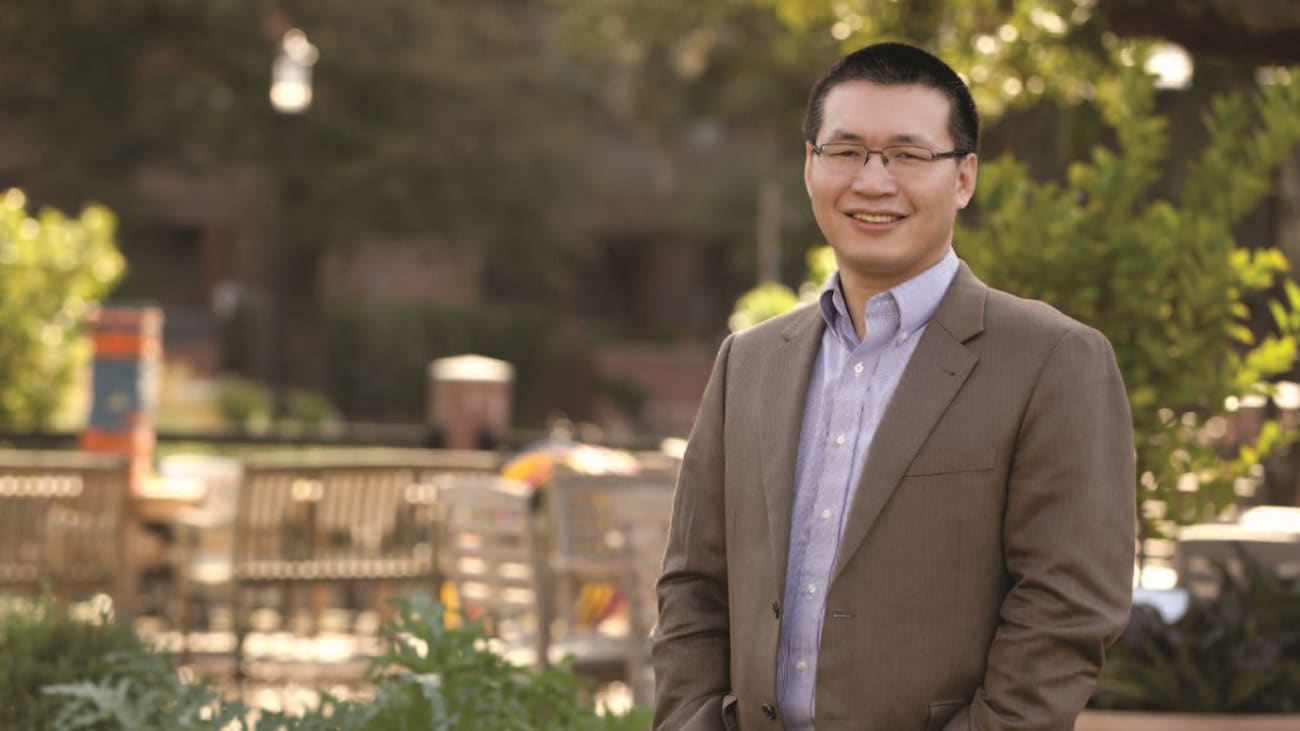

Hesheng Liu, Ph.D., jokes that he relocated to MUSC from Harvard University because he’s originally from the South – South China, that is.
The fact is, when Liu first came to MUSC to give a talk, he had no idea he would end up moving to Charleston as the SmartState Endowed Chair in Imaging Science in the Brain Imaging SmartState Center or become the associate director for the MUSC Center for Biomedical Imaging. But as he talked to people like Kathleen Brady, M.D., Ph.D., vice president for research; Peter Kalivas, Ph.D., chair of the Department of Neuroscience; and Thomas Uhde, M.D., chair of the Department of Psychiatry and Behavioral Sciences, he realized that his work studying brain function through “resting-state” functional MRIs could have a ripple effect in multiple disciplines.
“I have a feeling that here it’s a very collaborative environment. That’s probably the most attractive thing,” said Liu, who earned his doctorate at Tsinghua University in Beijing and retains an associate professorship at Harvard.
And MUSC’s researchers are delighted to have him here.
“He’s an international expert on resting-state MRI measurements,” Kalivas said. “He’s developed methods for evaluating the data from resting-state MRI that are absolutely cutting edge.”
Brady said Liu’s technical expertise will bring MUSC’s imaging research portfolio “to the next level.”
“For a campus our size, we have a large number of people who are doing work in this neuroimaging area, and they’re doing it across disorders – everything from ADHD and Alzheimer’s to addictions – so I think he really saw the potential for collaboration here as very rich,” she said.
Liu’s work looks to create “fingerprints” of individuals’ brains by mapping out their functional architecture. Although researchers have long known the general areas of the brain responsible for language, motor skills and executive functioning, the specifics have been harder to capture. Functional MRIs, or fMRIs, provide a “window” into the brain to see which part is at work, but they have yet to prove their value to an individual patient facing a disease or diagnosis.
“After 27 years of development, it’s still limited to the research community. In the hospital, doctors cannot prescribe a functional MRI scan,” Liu said.
Doctors can get a regular MRI scan of a patient to check for anatomical changes, but they can’t get an fMRI scan to check for changes in the brain’s signals. That’s because the fMRI measures a signal increase that’s pretty tiny – maybe 1% – compared to the nonstop, apparently random, activity happening in the brain. Because the signal is so weak, researchers can’t look at an individual’s fMRI but instead have to look for an average across thousands of fMRIs to come to any conclusion about the purpose of any particular brain signal.
Pushing fMRI toward clinical applications, Liu’s group uses resting-state fMRIs. The resting-state fMRI captures the nonstop activity in the brain, which Liu said may be the brain constantly checking its infrastructure by sending out test signals. Instead of requiring a subject in a scanner to do a particular task – tapping a finger, solving a problem, moving her tongue – the resting-state fMRI simply requires the subject to lie there.
“The beauty of this technology is now we are not looking at the 1% signal. We are looking at the 99%. So it’s very robust,” he said.
His team has been working to develop the computational algorithms to understand what’s embedded in those spontaneous brain signals and then create a map of the brain.
An individualized map of a specific patient’s brain network could greatly improve brain surgery, and Liu believes this application could be ready for clinical use in a year or two.
Right now, he said, patients with epilepsy or brain tumors sometimes go through an awake surgery, a demanding task for both patient and surgeon. To ensure the surgeon doesn’t damage functions like language, memory or movement, the patient is awake during the critical portion of the surgery and asked to perform specific tasks to demonstrate that those functional brain networks remain intact. Liu has been running trials with hospitals in China to compare their results from awake surgery with what his calculations would recommend, and he has found his calculations to be spot on.
“We’re going to see that we can get it really, really precise,” he said. “I believe our technology is almost ready, so we can prescribe an fMRI for that.”
Longer term, Liu thinks this technology has applications for checking on brain recovery after stroke, psychiatric care and maybe even one day for general health and wellness. He can envision a time when middle-aged people will go to their doctors for a checkup and not only get their cholesterol levels, blood pressure and weight checked, but also whether their brains are signaling at an appropriate rate or slowing down more quickly than expected.
Liu is also excited about the possibilities of collaborating with MUSC researchers working on drug addiction and brain stimulation. Furthermore, brain mapping with fMRI could also help in developing treatments for psychiatric disorders by classifying patients according to which networks are dysfunctional.
“The bottom line is, Dr. Liu is hoping to get fMRI-based biomarkers of neuropsychiatric disorders and then maybe, once that’s established, use those biomarkers to help refine therapy,” Kalivas said.



